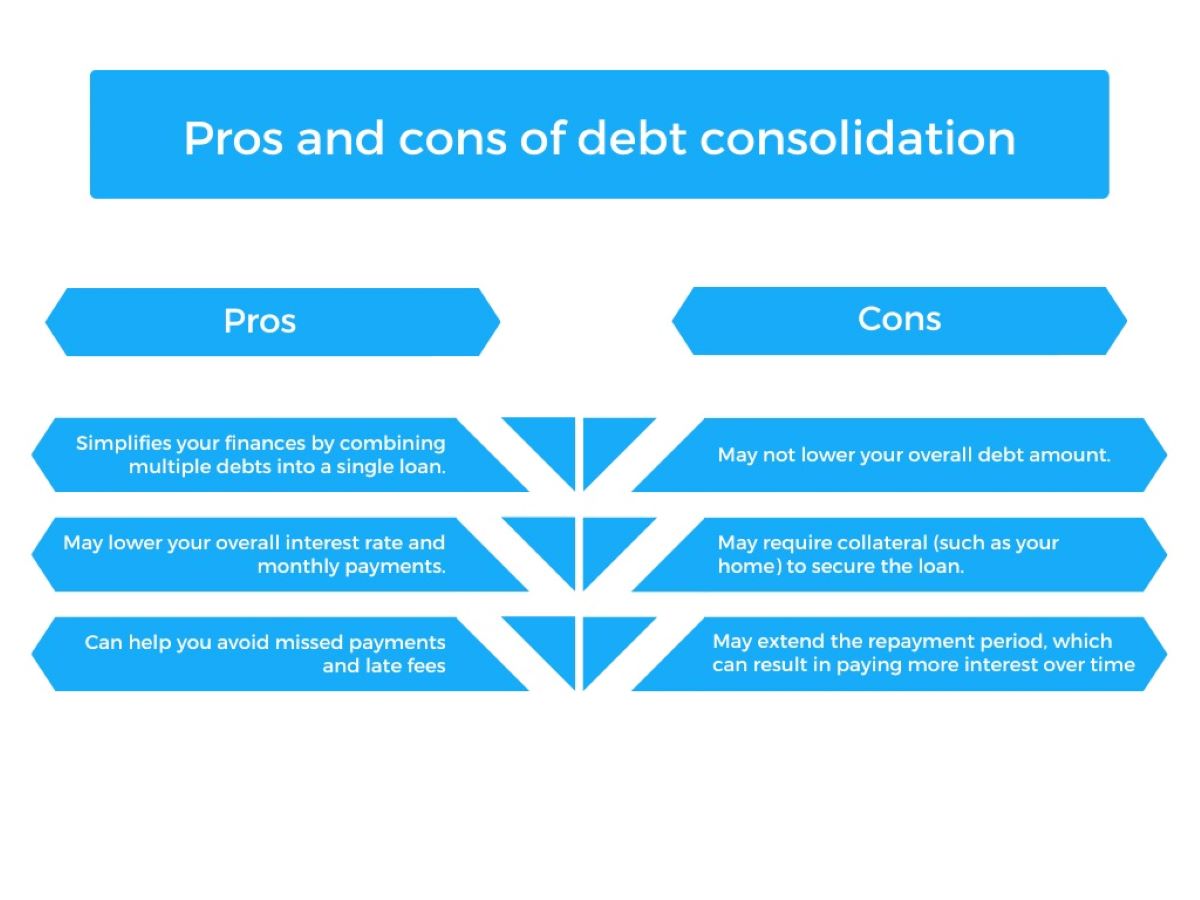

Finance
What Is Debt Funding
Modified: March 5, 2024
Learn about debt funding in finance and how it can help businesses secure the necessary capital for growth and operational expenses.
(Many of the links in this article redirect to a specific reviewed product. Your purchase of these products through affiliate links helps to generate commission for LiveWell, at no extra cost. Learn more)
Table of Contents
Introduction
Debt funding plays a crucial role in the world of finance, serving as an essential source of capital for businesses and individuals alike. It refers to the practice of borrowing funds from external sources with the commitment to repay the principal amount along with interest within a specified timeframe.
In simple terms, debt funding is akin to taking a loan, where the borrower agrees to repay the borrowed amount with an additional cost associated with interest. This method of financing is widely used to support various activities, such as launching a new business, expanding existing operations, purchasing assets, or managing personal financial obligations.
Debt funding offers several advantages that make it an attractive option for many borrowers. However, it also comes with some drawbacks that need to be carefully considered. Understanding the different types of debt funding, how it works, and the factors to consider before opting for it are crucial for making informed financial decisions.
This article dives into the intricacies of debt funding, exploring its definition, types, advantages, and disadvantages. We will also discuss how debt funding works and highlight important factors to consider before embracing this financing option. Additionally, we will provide some real-world examples to illustrate the application of debt funding in various scenarios.
Whether you are an entrepreneur seeking funds for your business or an individual looking to finance a personal endeavor, understanding the fundamentals of debt funding is essential. So, let’s delve deeper into this concept and explore the world of debt financing!
Definition of Debt Funding
Debt funding refers to the process of raising capital by borrowing money from external sources, such as financial institutions, investors, or individuals, with the agreement to repay the borrowed amount along with interest and any associated fees. This form of financing provides individuals and businesses with access to the necessary funds to meet their financial needs or pursue opportunities.
When opting for debt funding, the borrower enters into a contractual agreement, commonly known as a loan agreement, with the lender. This agreement outlines the terms and conditions of the loan, including the loan amount, interest rate, repayment schedule, and any security or collateral required.
The borrowed amount, typically referred to as the principal, can be utilized for various purposes, such as business expansion, equipment purchase, working capital requirements, debt consolidation, education expenses, or even personal expenses like purchasing a home or a car.
Interest is the additional cost associated with debt funding, representing the compensation the lender receives for providing the funds. Interest rates can be fixed or variable, depending on the terms of the loan. It is important for borrowers to understand the interest rates and how they impact the overall cost of borrowing.
Debt funding can take different forms, such as bank loans, lines of credit, credit cards, bonds, or even crowdfunding platforms. Each type of debt funding has its own characteristics and suitability based on the borrower’s specific needs and circumstances.
Overall, debt funding serves as an important component of the financial ecosystem, allowing individuals and businesses to access capital that they may not have otherwise. Understanding the definition of debt funding sets the foundation for exploring the various types and aspects of this financing method.
Types of Debt Funding
Debt funding encompasses a variety of options that individuals and businesses can leverage to secure the necessary financing. Each type of debt funding has its own unique features and suitability based on the borrower’s specific circumstances. Let’s explore some of the common types of debt financing:
- Bank Loans: Bank loans are the most traditional form of debt funding, where borrowers receive a specific amount of money from a bank. The loan is repaid over a predetermined period, usually with fixed monthly payments and interest.
- Lines of Credit: A line of credit provides borrowers with access to a predetermined limit of funds that they can draw upon whenever needed. Interest is charged only on the amount borrowed, and as the borrowed amount is repaid, the credit limit is restored.
- Credit Cards: Credit cards are a common form of revolving debt funding where individuals can make purchases up to their credit limit. Borrowers can repay the outstanding balance in full or make minimum monthly payments with interest.
- Bonds: Bonds are debt instruments issued by corporations or governments to raise capital. Investors purchase these bonds in exchange for regular interest payments and the return of the principal amount upon maturity.
- Asset-based Loans: Asset-based loans are secured by specific assets such as inventory, accounts receivable, or equipment. Lenders assess the value of the assets and provide funds based on a percentage of their value.
- Crowdfunding: Crowdfunding platforms offer a way for individuals and businesses to raise funds by collecting small contributions from a large number of people. Debt-based crowdfunding involves individuals lending money to the borrower and receiving regular interest payments.
These are just a few examples of the diverse range of debt funding options available in the market. Each type has its own advantages and considerations, and it is essential to carefully evaluate each option based on the specific needs and goals of the borrower. Understanding the different types of debt funding empowers individuals and businesses to make informed decisions when seeking financial support.
Advantages of Debt Funding
Debt funding offers several advantages that make it an appealing financing option for individuals and businesses. Let’s explore some of the key benefits:
- Flexibility: Debt funding provides borrowers with flexibility in how they utilize the borrowed funds. Whether it is for expanding operations, purchasing assets, or meeting working capital needs, borrowers have the freedom to allocate the funds as they see fit.
- Ownership Retention: Unlike equity financing, where investors receive ownership stakes in the business, debt funding allows borrowers to retain full ownership and control over their business or assets. This means that the borrower does not have to share profits or decision-making authority with lenders, which can be crucial for maintaining autonomy.
- Tax Benefits: In many cases, the interest paid on debt is tax-deductible for businesses. This reduces the overall taxable income and can result in significant tax savings. It is important to consult with a tax professional to understand the specific tax benefits based on the borrower’s jurisdiction and circumstances.
- Lower Cost of Capital: Debt funding often comes with lower costs compared to equity financing. The interest rates on debt are typically lower than the returns expected by equity investors. This allows borrowers to access the necessary funds at a lower cost and potentially generate higher returns on investment.
- Build Credit History: Responsible repayment of debt can help establish and improve the borrower’s credit history. Building a strong credit profile is beneficial for future financing needs, as it increases the chances of obtaining loans at favorable terms and conditions.
- Fixed Repayment Structure: Debt funding usually involves a structured repayment schedule, making it easier for borrowers to plan and manage their cash flow. Fixed monthly payments allow for better financial forecasting and budgeting.
These advantages highlight why many individuals and businesses choose debt funding as a financing option. However, it is essential to consider the specific circumstances, risk tolerance, and long-term goals before opting for debt funding. Evaluating the pros and cons and understanding the implications of borrowing is crucial for making informed financial decisions.
Disadvantages of Debt Funding
While debt funding offers several advantages, it also comes with certain disadvantages that borrowers should consider before opting for this financing option. Here are some of the key drawbacks:
- Interest Payments: One of the significant disadvantages of debt funding is the obligation to repay the borrowed amount with interest. The interest payments can add up over time, increasing the overall cost of borrowing and potentially impacting the borrower’s cash flow.
- Debt Service Burden: Taking on debt means committing a portion of future cash flows to debt repayment. This can place a burden on the borrower’s financial stability, particularly if the business experiences a downturn or faces unexpected challenges. Meeting debt obligations becomes a top priority, which may limit the flexibility to invest in other growth opportunities.
- Risk of Default: When taking on debt, there is always the risk of default, which occurs when the borrower is unable to repay the borrowed amount. Defaulting on debt can lead to severe consequences, such as damaged credit history, legal actions, or even asset seizure to repay the outstanding debt.
- Collateral and Personal Guarantee: In some cases, lenders may require borrowers to provide collateral or personal guarantees to secure the debt. This means that if the borrower is unable to repay the loan, the lender can seize the pledged collateral or hold the borrower personally liable for the outstanding debt.
- Impact on Credit Score: Taking on additional debt can impact the borrower’s credit score. High levels of debt or missed debt payments can lower the credit score, making it more challenging to access credit in the future or obtain favorable interest rates.
- Restrictive Covenants: Lenders may impose certain conditions, known as covenants, on the borrower as part of the loan agreement. These covenants may restrict the borrower’s ability to make certain financial decisions, such as taking on additional debt, disposing of assets, or altering the company’s structure.
While these disadvantages should be carefully considered, they do not necessarily make debt funding an unfavorable option. It is important for borrowers to evaluate their financial situation, risk tolerance, and long-term goals to determine whether debt funding aligns with their needs. Proper planning, budgeting, and risk management can help mitigate the potential drawbacks and ensure successful debt repayment.
How Debt Funding Works
Debt funding operates through a well-defined process that involves several key steps. Understanding how debt funding works is crucial for borrowers seeking to secure financial resources. Here is a simplified overview of the debt funding process:
- Borrower Identification and Evaluation: The first step in debt funding is identifying the need for financing and evaluating the borrower’s creditworthiness. Lenders assess factors such as the borrower’s credit score, financial statements, business plan (if applicable), and collateral (if required) to determine the borrower’s ability to repay the loan.
- Lender Selection: Once the borrower identifies the need for debt funding and determines the loan amount, they must choose a suitable lender. This involves researching different lending options, comparing interest rates, terms, and conditions, and considering factors such as the lender’s reputation and customer service.
- Application and Documentation: The borrower initiates the loan application process by submitting the necessary documentation to the lender. This typically includes financial statements, tax returns, bank statements, business plans, personal identification, and any other documents required by the lender.
- Underwriting and Approval: Upon receiving the loan application, the lender conducts a thorough underwriting process to assess the borrower’s creditworthiness and calculate the loan’s risk. The lender reviews the borrower’s financial information, credit history, and collateral (if applicable) and evaluates the borrower’s ability to repay the loan. Based on this analysis, the lender approves or denies the loan application.
- Loan Terms Negotiation: If the loan application is approved, the borrower and lender negotiate the specific terms and conditions of the loan, including the loan amount, interest rate, repayment schedule, and any collateral or personal guarantee requirements. Both parties reach a mutual agreement on these terms before proceeding.
- Fund Disbursement: Once the loan agreement is finalized and signed, the lender disburses the approved loan amount to the borrower. The funds are typically transferred to the borrower’s bank account or issued in the form of a check.
- Loan Repayment: The borrower is now responsible for repaying the loan according to the agreed-upon terms. This involves making regular payments, usually monthly, that include both the principal amount and the accrued interest. The borrower must ensure timely repayment to avoid penalties, additional interest charges, and the risk of default.
Throughout the loan repayment period, borrowers and lenders maintain communication and may need to provide periodic updates to the lender on the business’s financial performance or other relevant information. Open communication and responsible repayment are essential for maintaining a healthy borrower-lender relationship.
It is worth noting that the debt funding process may vary depending on the specific type of loan and lender. Each lending institution may have its own set of requirements and procedures. Therefore, it is essential for borrowers to thoroughly review and understand the terms and conditions of the loan before committing to debt funding.
Factors to Consider Before Opting for Debt Funding
Before deciding to pursue debt funding, it is important for borrowers to carefully consider several key factors. Evaluating these factors can help borrowers make informed decisions and ensure that debt funding is the right choice for their specific needs. Here are some factors to consider:
- Repayment Ability: Borrowers should assess their ability to comfortably repay the borrowed funds. Analyzing cash flow, profitability, and financial projections is crucial to determine whether the business or individual can meet the repayment obligations without straining their financial stability.
- Interest Rates and Costs: It is essential to understand the interest rates and associated costs of the debt funding. Borrowers should compare rates from multiple lenders and consider the overall cost of borrowing, including any fees or charges, to ensure that the loan remains affordable and provides value for money.
- Risk Tolerance: Debt funding carries a certain level of risk, and borrowers must consider their risk tolerance levels. Understanding the potential challenges and uncertainties associated with the borrowing journey can help borrowers determine their comfort level in taking on debt and managing potential risks effectively.
- Collateral and Personal Guarantee: Some types of debt funding may require borrowers to provide collateral or personal guarantees. It is important to carefully consider the implications of pledging assets or assuming personal liability in case of default. Assessing the potential risks and consequences can help borrowers make informed decisions regarding collateral requirements.
- Business and Industry Outlook: Borrowers should analyze the current state of their business and the broader industry. Consider factors such as market conditions, competition, and potential growth opportunities. Assessing the business’s prospects and potential risks can help determine whether debt funding is the right choice to support growth or overcome challenges.
- Alternative Financing Options: Debt funding is not the only financing option available. Borrowers should explore and evaluate alternative sources of funding, such as equity financing, grants, or bootstrapping, to determine if there are better-suited options for their specific needs and goals.
By carefully considering these factors, borrowers can make informed decisions regarding debt funding. It is important to remember that each borrower’s situation is unique, and what may be suitable for one may not be suitable for another. Consulting with financial advisors or experts can provide additional guidance and help borrowers navigate the decision-making process successfully.
Examples of Debt Funding
Debt funding is utilized by a wide range of individuals and businesses to meet their financial needs. Let’s explore some common examples of debt funding:
- Small Business Loan: A small business owner may apply for a loan from a bank or a Small Business Administration (SBA) loan program to finance their operations, purchase equipment, or expand their business.
- Mortgage Loan: Individuals looking to purchase a home often rely on mortgage loans to finance the purchase. Mortgage loans provide long-term funding and the property itself serves as collateral.
- Student Loans: Many students pursue higher education with the help of student loans to cover tuition fees, books, and other educational expenses. These loans are typically repaid after graduation.
- Corporate Bonds: Large corporations may issue bonds as a form of debt funding. Investors purchase these bonds, effectively loaning money to the corporation, and receive regular interest payments until the bonds mature.
- Revolving Credit Facility: Businesses often secure revolving credit lines to manage their working capital needs. The credit facility allows the business to borrow funds as needed and repay them on a revolving basis.
- Credit Cards: Individuals and businesses can use credit cards as a form of short-term debt funding. The borrower can make purchases up to their credit limit and repay the outstanding balance either in full or in minimum monthly payments.
- Factoring: Factoring is a form of debt funding commonly used by businesses to convert their accounts receivable into immediate cash. The business sells their outstanding invoices to a factoring company at a discounted rate in exchange for immediate funds.
- Peer-to-Peer (P2P) Lending: P2P lending platforms connect borrowers directly with individual lenders who provide the necessary funding. Borrowers can access funds from multiple lenders, often at competitive interest rates.
These examples demonstrate the diverse nature of debt funding and how it can be tailored to meet the specific needs of borrowers. It is important to note that the availability of certain debt funding options may vary based on factors such as geographical location, industry, and individual creditworthiness. The key is to explore the options available and choose the most suitable form of debt funding based on the specific circumstances and goals of the borrower.
Conclusion
Debt funding serves as a valuable resource for individuals and businesses seeking financial support. It provides access to capital that can be used for various purposes, from funding business expansion to purchasing assets or managing personal financial needs. Understanding the intricacies of debt funding is essential for making informed decisions and maximizing its benefits.
Throughout this article, we have explored the definition of debt funding, the various types available, and the advantages and disadvantages it brings. We have also discussed how debt funding works, from borrower identification to loan repayment. Additionally, we highlighted the factors that borrowers should consider before opting for debt funding and provided examples of how businesses and individuals utilize this financing option.
It is crucial for borrowers to carefully evaluate their financial situation, risk tolerance, and long-term goals before choosing debt funding as a financing option. By considering factors such as repayment ability, interest rates, and alternative financing options, borrowers can make informed decisions that align with their needs and aspirations.
Debt funding offers flexibility, lower costs compared to equity financing, and the opportunity to build credit history. However, it comes with certain risks, such as the obligation to make interest payments and the potential impact on credit scores in case of default. Proper planning, responsible repayment, and clear communication with lenders are key to successfully navigating debt funding.
In conclusion, debt funding serves as a vital component of the financial ecosystem, enabling individuals and businesses to access the necessary funds to fuel growth and achieve their financial objectives. By understanding the nuances of debt funding and considering the various factors involved, borrowers can make sound financial decisions and utilize debt funding to their advantage.














